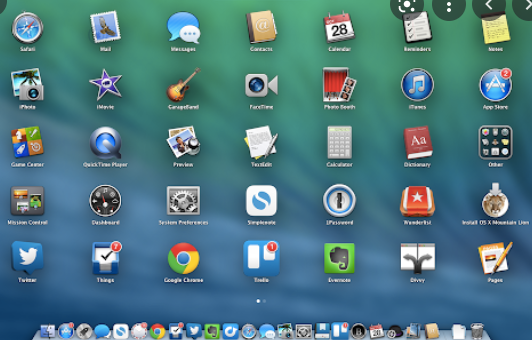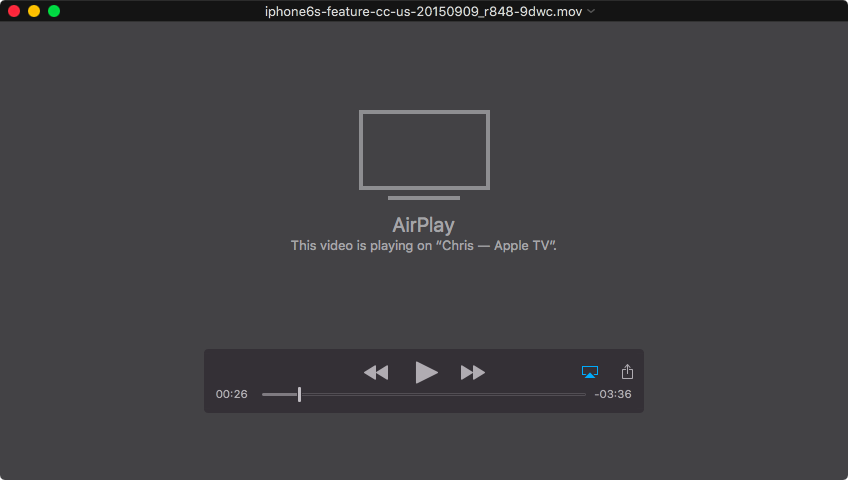

- #Quicktime os x 10.9 update#
- #Quicktime os x 10.9 plus#
- #Quicktime os x 10.9 download#
- #Quicktime os x 10.9 mac#
- #Quicktime os x 10.9 windows#
Once tabs are created, you can drag and drop folders between them and turn them into their own separate windows by dragging them out.
#Quicktime os x 10.9 plus#
Once you've got more than one folder in a window, a Safari-style plus sign will pop up, letting you add more we're not entirely sure why Apple opted not to put the option there by default, but making tabs is simple enough without it. You can press Command and double-click a folder or choose the option from a drop-down. There are a number of ways to accomplish this. Ultimately, it's yet another tool at your disposal for cleaning up your hard drive and finding things even faster.Īnother handy Finder feature was borrowed directly from the browser world: Finder tabs let you open multiple folders in a single window. Which is to say, it's a compelling feature if you actually use it. Just how handy tags will be depends on how organized you are - and how often you remember to actually tag things. Once you do, it will show up in all of the searches you do in Finder and via the tag-refinement sidebar. You can tag files there, regardless of the device that was initially used to create it (Mac, iPhone, iPad).

Apple's also integrated tags into its own apps, like Pages, with a field that pops up when you save things, allowing you to tag item from within the program.ĭitto for iCloud's desktop component. All told, it makes it even easier to find what you're looking for, particularly in those cases when you can't quite remember what you've titled something. Meanwhile, tags have been added to the Finder Spotlight search, giving you another option to refine results. Tags also appear in the left sidebar of Finder windows, so you can quickly tap in to see all of the files that fall within a given category.

You can assign as many tags as you want to a given file the corresponding colors will show up as dots next to the file name line for a quick view. Apple's already created a few to get you started, including five colors and categories like "Home," "Important" and "Work." A file can also be tagged from the drop-down that pops up when you press Control and click it. Highlight a file, click the button and you'll be able to tag it with an existing label or a new one. This is just one of many entry points for tagging. Open a window and you'll immediately spot a new button, just to the right of the Share feature that came along for the ride in 10.8. There are, however, some notable additions here. That means, thankfully, that the company hasn't yet transformed OS X into a desktop counterpart to iOS, but it also means that after 15 years, this once-revolutionary operating system is starting to feel a bit stale. While Microsoft has made its way through a couple of UI overhauls over the past decade (some, admittedly, more successful than others), Apple's tinkered and tweaked and iterated, sprinkling in new features where it saw fit, but generally choosing not to mess with a good thing. Rest assured, everything is just where you left it.
#Quicktime os x 10.9 mac#
If you've so much as touched a Mac in the past decade, you won't be blindsided the first time you boot up Mavericks.
But is it enough to help OS X maintain Apple's self-proclaimed "world's most advanced desktop operating system?" Or is the company's reluctance to think different on the desktop hampering innovation?
#Quicktime os x 10.9 download#
We can tell you right now that there's enough in here to justify the download time, especially given that this is free for people already running Snow Leopard or higher. And while there are no changes to the Finder as major as Notifications, tabbed windows and tags aim to help users better organize their desktops. As the company's decidedly modest tagline puts it, Mavericks lets users "Do even more with new apps and features." At the top of the list are the additions of Maps and iBooks - two apps first introduced in iOS. That's not to say there aren't a fair number of additions. Which makes sense, in a way: there's little question that the success of its smartphone and tablet offerings have contributed to the erosion of desktop sales, so it figures that the company is focusing much of its developer talent on mobile.
#Quicktime os x 10.9 update#
Apple didn't opt for a "biggest change ever" update as it did with release of iOS 7 (and potentially risking alienating longtime users as a result). Like all the iterations before it, version 10.9 is a building block atop the operating system's familiar UI. Meaning, those of you waiting for an altogether new experience will have to keep holding your breath. When Apple first unveiled Mavericks, the latest version of its desktop operating system, we noted one key takeaway: The company is committed to OS X.


 0 kommentar(er)
0 kommentar(er)
